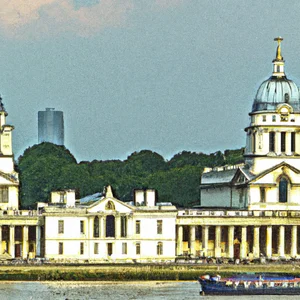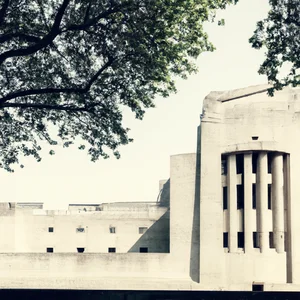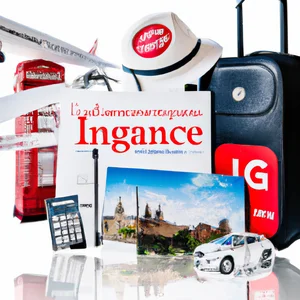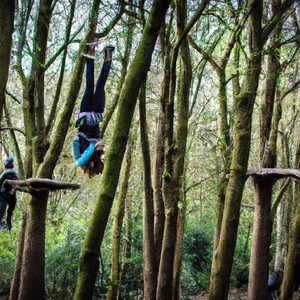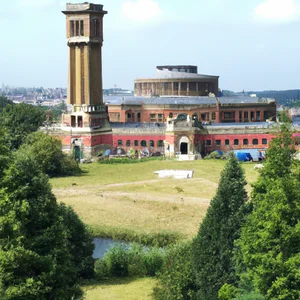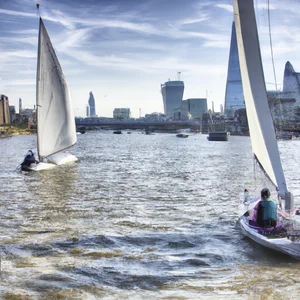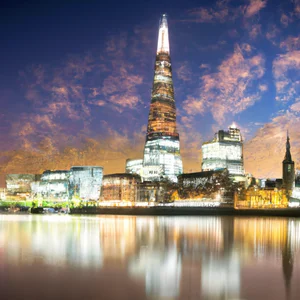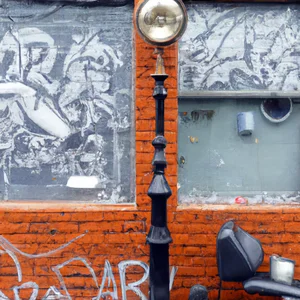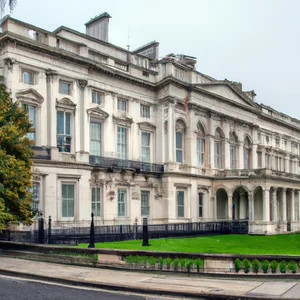Book your experience
London transport guide
So, let’s talk about public transport in London, which is a bit of a peculiar thing, I mean, it’s not exactly like taking the bus home, right? Here, if you are in the British capital, get ready for a real journey into the world of tubes and buses.
Let’s start from the Tube, which is not just a subway like the others. It’s an underground labyrinth that seems to never end. It’s like a huge anthill, where people flow from one side to the other, a bit like they’re rushing to an appointment they can’t miss. Well, I remember once I was trying to get to an exhibition and I got lost between the stops. Finally, I asked a guy for directions who, with a smile, told me, “Follow the crowd, you can’t go wrong!” Here’s a lesson I learned: sometimes you just need to trust the flow of people.
Now, as for the buses, well, they’re a different story. They have that vintage charm, with those bright red colors that make you feel a bit like a tourist on a mission. I have to say that getting on a double-decker bus is an experience. In fact, the last time I took the bus, there was a guy playing the guitar and making everyone sing. It was like a mini concert in the middle of the city! Maybe this isn’t always the case, but hey, London is full of surprises.
When it comes to tickets, well, this is where things get a little complicated. You can use the Oyster Card, which is a bit like your best friend in the city, as it saves you a lot of money. But be careful, don’t forget to “tap” when you go up and down, otherwise you’ll end up with a surprise on your bill, which is never pleasant, right? I think the first time I used it, I made a mistake and paid double. A real disaster!
Also, if you’re in a hurry, don’t worry, there are apps to keep you updated on the schedule. But, to be honest, sometimes even apps make mistakes, so a little patience is needed. In short, if you’re thinking of visiting London, get ready for a real journey between Tube and bus, because, in the end, it’s a bit like discovering a new world. And who knows, maybe you’ll have a funny story to tell too!
Surfing the Tube: secrets and useful tips
A Personal Experience
The first time I stepped onto the London Underground, the Tube, was an experience I will never forget. As I walked down the escalators, the distinctive sound of the train pulling into the station and the soft lighting of the platforms made me feel like I had entered another world. The crowd moved with a certain grace, like a wave, and I, with a Tube map in hand, tried to orient myself. It was at that moment that I realized that the Tube was not just a means of transport, but a true symbol of London life.
Practical Information
The London Tube is one of the largest and oldest underground transport networks in the world. With 11 lines and over 270 stations, it is essential for getting around the city. To make your journey easier, make sure you have an Oyster Card or a Contactless card, which will allow you to save on ticket costs and avoid long queues at the machines. You can find up-to-date information on lines and timetables directly on the official Transport for London website (TfL).
An Unconventional Advice
If you want to enjoy a panoramic view of the city while using the Tube, try traveling on one of the elevated lines, such as London Overground. A lesser-known route is the one between Gospel Oak and Barking, where you can see London’s residential neighborhoods and parks from a totally different perspective, away from the hustle and bustle of the centre.
Cultural and Historical Impact
The Tube is not just a means of transport, but a real cultural heritage. Opened in 1863, it revolutionized the way Londoners moved and interacted with the city. Each station has a unique history and often features works of art that tell the story of the neighborhood. For example, Southgate station is famous for its Art Deco decoration, which harks back to the interwar period.
Sustainability and Responsibility
In the context of sustainability, the Tube is an environmentally friendly alternative to using the car. By using public transport, you help reduce carbon emissions and keep London’s air cleaner. Additionally, TfL is investing in low-emission trains and more energy-efficient stations, so traveling by the Tube is also a way to support green initiatives.
An Activity to Try
For a unique experience, try taking the Tube during rush hour to feel part of the ‘flow’ of London life. Hop off at Baker Street and visit the Sherlock Holmes Museum, or stop in Covent Garden to explore the markets and watch live performances. I assure you that every trip will become an adventure.
Myths and Misconceptions
A common misconception is that the Tube is always crowded and unsafe. Although it is true that there is a lot of movement during rush hours, the security system is very strict and the stations are well lit. Additionally, Londoners are generally very helpful and willing to help you if you need directions.
Final reflection
The next time you find yourself in line to enter one of the Tube stations, ask yourself: What stories are hidden behind every face you encounter? Every trip is an opportunity to connect with the city and the people who live there. Take the Tube and let yourself be transported not only physically, but also culturally, to the beating heart of London.
Discover London by bus: alternative itineraries
A journey through the clouds and streets of London
The first time I took a double-decker bus in London, I couldn’t believe I was sitting above the hubbub of the city, with a panoramic view that looked like a moving painting. Crossing the Thames, I discovered corners of London that I would never have seen in the frenzy of the tube. The bus is an amazing way to get a taste of London life, and every stop is an opportunity for an unexpected adventure.
Practical information
London buses are operated by Transport for London (TfL) and offer an efficient and punctual service. With over 700 lines and more than 9,000 stops, you can easily explore the city without the need for a taxi. The 11 bus, for example, takes you from Westminster up to Tower Hill, passing iconic sights like Big Ben and St. Paul’s Cathedral. To plan your journey, you can use the TfL app, which offers real-time updates and personalized itineraries.
An insider tip
If you want a unique experience, hop on bus 15, which will take you from Trafalgar Square to Tower Hill. Not only is this route scenic, but it also gives you the opportunity to discover some of London’s hidden treasures, such as St. Olave’s Church, an ancient medieval church that often goes unnoticed by tourists. Also, try to sit upstairs at the front for the best view!
The cultural impact
The bus is not just a means of transport; it is an integral part of London culture. Since its introduction in the 19th century, it has represented a symbol of accessibility and innovation. Double-decker buses, in particular, have become icons of the city, helping to create a unique visual identity. Additionally, the art that decorates many buses and stops tells stories of London and its inhabitants, making travel not only practical, but also educational.
Sustainability and responsibility
Opting for buses instead of private cars is a sustainable choice. According to TfL, each bus journey produces fewer carbon emissions than a car journey. Furthermore, many buses are now equipped with electric motors, contributing to a cleaner environment. Using public transport is an effective way to explore London responsibly and reduce your carbon footprint.
An experience not to be missed
When in London, don’t miss the opportunity to visit Borough Market and then take bus 343, which will take you through the vibrant neighborhood of Bermondsey. Here, you can savor local dishes and discover historic markets, all while enjoying the cityscape.
Myths to dispel
A common misconception is that buses are always crowded and uncomfortable. In fact, London buses often offer a more relaxed experience than the tube, especially during off-peak hours. Plus, the views and the chance to interact with Londoners make the trip that much more fascinating.
A final reflection
When exploring London by bus, we encourage you to look beyond just the journey. Each stop is an opportunity to discover stories, cultures and people. What is your favorite itinerary? What hidden corners have you discovered during your travels? Get involved in the magic of London and remember that every bus trip can become an unforgettable adventure.
Transport pass: which one to choose?
When I first set foot in London, I remember seeing the famous symbol of public transport: the red circle with the words “Underground” written on it. The idea of moving around such a frenetic city without a clear plan seemed intimidating; yet, it was at that moment that I discovered the power of transit passes. Choosing the right pass can transform the experience of exploring London from a mere series of trips to an unforgettable adventure.
Pass types available
London offers several options for getting around, each with its own advantages. Here are some of the most common:
- Oyster Card: This reloadable card is a must for every visitor. It allows you to save money compared to single tickets and can be used on Tube, buses, trams and even on some trains. Any advice? You can also return it at the end of your trip for a refund of your deposit.
- Travelcard: Perfect for those who plan to travel frequently. It can be purchased for a day, a week or a month. Unlike the Oyster, the Travelcard offers unlimited travel in the selected area.
- Contactless Payment: If you have a contactless payment card, you can use it directly on public transport. It’s convenient and doesn’t require any registration.
A golden tip
A little-known tip involves using your Oyster Card: you can link it to your favorite travel app to track spending in real time. This will help you track how much you spend and plan your transportation budget more accurately.
Cultural and historical impact
London’s transport system isn’t just a way to get around, it’s an integral part of London life. The metro, opened in 1863, was the first in the world and revolutionized the way people moved around the city. Its history is rich, and each station has its own identity, contributing to the cultural mosaic that makes London unique.
Sustainability and responsibility
London is making great strides towards more sustainable transport. By using public transportation instead of private cars, visitors can help reduce pollution and congestion. Furthermore, most buses are powered by electric or hybrid energy, making travel even more eco-friendly.
An experience not to be missed
I recommend you take advantage of the London River Roamer, a pass that allows you to travel on the Thames. This experience not only gives you a unique view of the city from the water, but allows you to discover lesser-known corners of London. Imagine passing iconic landmarks such as Tower Bridge and the London Eye, whilst enjoying a moment of tranquility away from the hustle and bustle of the city.
Myths and misconceptions
A common misconception is that public transport in London is always crowded and unsafe. In reality, the subway and buses are among the safest modes of transport in the world. Local authorities work tirelessly to ensure passenger safety, and traveling at off-peak times can offer a quieter and more pleasant experience.
A personal reflection
When I started exploring London with Oyster Card in hand, I realized that every trip was an opportunity to meet new people and discover fascinating stories. Which pass will you choose for your trip? The choice you make could open the doors to a whole new dimension of the city. Are you ready to discover London like a true insider?
Local experiences: bus 15 and its route
An unforgettable journey
I still remember my first trip on the 15 bus, an experience that transformed the way I see London. As I boarded, the smell of coffee and croissants came from a bar next to the stop. The bus, decorated with red seats and panoramic windows, set off and, in the blink of an eye, I found myself immersed in an ever-changing urban landscape. From Fleet Street to Trafalgar Square, the 15 bus is not just a means of transport, but a window into everyday London life.
Practical information
The 15 bus is one of London’s historic lines and offers a route that passes through some of the city’s most iconic places. It starts from Tower Hill and ends at Trafalgar Square, passing through St. Paul’s Cathedral and The Strand. It runs every day and, depending on the time, you can consult the Transport for London website for updated timetables and frequencies. A useful tip is to download the TfL app, which offers real-time information on buses and routes.
An insider tip
Here’s a little-known trick: If you board the 15 bus during the early hours of the morning or late afternoon, you might be lucky enough to get a seat on the upper deck at the front, from which you can enjoy an unrivaled view. But it’s not just the view that makes this experience special; listening to the conversations of other passengers offers an insight into London life that can rarely be appreciated on the tube.
The cultural impact of the bus 15
The 15 bus has a long history dating back to 1906 and represents a piece of London culture. It was the city’s first double-decker bus, a symbol of an era of innovation in public transport. Today, the bus continues to represent not only a means of transport, but also a place of meeting and social interaction between Londoners and visitors.
Sustainability and responsibility
Using bus 15 is a choice that contributes to environmental sustainability. Compared to the use of private vehicles, public transport reduces carbon emissions and contributes to a cleaner urban environment. Additionally, many London buses are now hybrid, further reducing environmental impact.
An experience worth trying
An unmissable activity is to go down to Trafalgar Square and visit the National Gallery, where you can admire world-famous works of art. After your visit, take a stroll in the surrounding gardens, where cultural and artistic events often take place.
Myths and misconceptions
A common myth is that London buses are always crowded and uncomfortable. In fact, bus 15 offers a great chance to sit and enjoy the view, especially during off-peak hours. Furthermore, London’s public transport system is well designed to ensure comfort and accessibility for all.
A final reflection
Every time I take the 15 bus, I remember that London is not just a city to see, but to experience. Next time you visit London, why not take a moment to reflect on how i can means of transport enrich your experience? What story might you discover sitting next to a Londoner on your next trip?
Subway Culture: Art and Hidden History
When I first stepped onto the London Underground, I was struck not only by its efficiency, but also by its vibrant history and astonishing artistic beauty. I remember a rainy afternoon when I decided to explore some of the less frequented stations. Upon entering Southbank station, I was greeted by a makeshift art gallery, with works by local artists decorating the walls. That visit opened my eyes to an aspect of the subway that few tourists know: the Tube is not just a means of transport, but a real underground museum.
A journey through history
The London Underground, opened in 1863, is the oldest in the world and tells stories of bygone eras. Each station has its own unique identity and often reflects the period in which it was built. For example, Baker Street station, famous for its connection to Sherlock Holmes, is not just a transit point; is a tribute to one of the most iconic figures in British literature. The vintage tiles and elaborate architecture of some stations, such as St. John’s Wood, offer a taste of Victorian design.
Insider secrets
A little-known tip is to look for stations that host artwork commissioned as part of the Art on the Underground program. These artistic installations, often invisible to the eyes of hurried passengers, enrich the travel experience. Don’t miss Aldgate East station, where you can admire the work of a local artist who reflects the multiculturalism of London.
Cultural impact and sustainable practices
Tube culture goes beyond simple functionality; it is a symbol of urban London life. The Metro also has a significant impact on sustainable tourism: traveling by Tube reduces carbon emissions compared to using private cars. In an age where sustainability is key, this is a great way to explore the city responsibly.
An experience not to be missed
For an authentic experience, I recommend taking a guided tour of the historic metro stations. Several local organizations offer walking tours that will take you through not only the art, but also the fascinating stories behind each stop.
Myths and misconceptions
A common misconception is that the London Underground is a dangerous or unwelcoming place. In reality, most stations are well-lit and patrolled, and Londoners are generally willing to offer directions or advice. Remember that the Tube is an essential part of London life, and many travelers consider it a safe and reliable way to get around.
In conclusion, I invite you to reflect on your next visit: how much of the culture and history of the London Underground do you already know? It may be time to discover a new side of this iconic city by exploring its fascinating underground world. Why not take a train and see where the journey takes you?
Sustainability in London: moving responsibly
A journey that changes perspective
I still remember my first time in London, when, with a map of the city in hand and the enthusiasm of an inexperienced traveller, I decided to explore the beating heart of the British capital. After walking for hours and savoring the wonders of street food in Borough Market, I found myself reflecting on how important it was to not only visit, but also respect the environment we find ourselves in. It was at that moment that I understood how essential it was to adopt sustainable travel practices, especially in a metropolis like London, where traffic and pollution can influence every visitor’s experience.
Practical and up-to-date information
London is making great strides in promoting sustainability. The public transport network, including the famous Tube and red buses, is constantly evolving to reduce environmental impact. According to Transport for London (TfL), 45% of journeys in central London take place via public transport. Using public transport not only helps reduce carbon emissions, but also offers a unique way to see the city from a different perspective.
An insider tip
If you want a truly sustainable experience, try using Santander Cycles bikes, also known as “Boris Bikes”. Not only will they allow you to explore London in an eco-friendly way, but they will also give you the freedom to discover hidden corners of the city that you might miss traveling by tube or bus. And a little secret: if you rent a bike for less than 30 minutes, the trip is free!
Cultural and historical impact
The concept of sustainability in London is not new. Since the late 19th century, the capital has sought to tackle pollution and congestion problems. Today, London is at the forefront of the fight against climate change, with initiatives such as the Ultra Low Emission Zone (ULEZ), which encourages the use of low-emission vehicles. These practices not only improve air quality but also help preserve the city’s historic beauty.
Responsible tourism practices
When planning your trip, consider using local apps for navigation and transportation information. These resources can help you find more sustainable routes and avoid overcrowding. Additionally, try to choose accommodations that promote eco-friendly practices, such as the use of renewable energy or waste reduction.
Soak up the atmosphere
Imagine cycling along the Thames, with the fresh breeze caressing your face and the sound of the city mixing with that of the waves. Every corner tells a story, every pedal stroke brings you closer to a more authentic and lively London. The feeling of contributing to a greener future makes every moment even more special.
An activity worth trying
To experience sustainability first-hand, take a guided bike tour through the historic streets of London. Not only will you explore the beauties of the city, but you will also have the opportunity to learn about local initiatives that promote responsible tourism.
Myths to dispel
A common misconception is that moving around London is expensive and complicated. In fact, the city offers numerous economical and practical transportation options. By using your Oyster Card or contactless, you can save significantly. Furthermore, public transport is well connected and easy to navigate, making exploring the city accessible to all.
Final reflection
When thinking about your next visit to London, ask yourself: how can I help preserve this beautiful city? Every small gesture counts, and choosing to move responsibly not only enriches your experience, but also contributes to a better future for generations to come. Are you ready to discover London with new eyes?
Avoid rush hours: how to travel better
I still remember my first time in London, when, with enthusiasm, I decided to explore the city using the Tube. With my pass in hand, I ventured into Oxford Circus station at 8.30am. It was like diving into a raging river: a sea of people, suitcases and umbrellas, all looking for a place in an already packed carriage. From that experience I learned that while the Tube is a quick way to get around, avoiding rush hour can turn a stressful journey into an enjoyable and authentic experience.
Information practices
Peak hours in London are generally from 7.30am to 9.30am and from 4.30pm to 6.30pm on weekdays. During these times, stations can be chaotic and carriages crowded. To avoid traveler traffic, I recommend planning your trips before 7:30 or after 9:30. You can check the official Transport for London (TfL) website for the most up-to-date timetables and information.
An insider tip
A little-known trick is to use the least crowded stations. For example, instead of taking the Tube from main stations like Piccadilly Circus or Leicester Square, try starting from nearby stations like Covent Garden or Green Park. These stations tend to be less crowded and offer easy access to main lines, allowing you to travel more comfortably.
The cultural impact of travel
Avoiding rush hour not only improves your travel experience, but also allows you to immerse yourself in the daily lives of Londoners. Traveling on the Tube during less busy times gives you the opportunity to observe and appreciate the architecture of the stations, many of which feature historic artwork and designs that tell the story of the London Underground. Every trip can become a cultural experience.
Sustainability in transport
Furthermore, traveling at off-peak times contributes to more sustainable tourism. By reducing the number of travelers during peak hours, you help reduce your environmental impact and create a more positive experience for everyone. Remember that London is a city that is making great efforts to become more eco-sustainable. By using public transport responsibly, you are doing your part to support this cause.
An activity worth trying
If you want a unique experience, grab a coffee in one of the cafés near Waterloo station and watch the people come and go. You might also consider taking a walk along the South Bank, where you can enjoy spectacular views of the Thames, thus avoiding the hustle and bustle of the tube.
Myths to dispel
A common misconception is that the Tube is always the best solution for getting around. In reality, there are times when London buses are more convenient and less crowded. Additionally, many bus lines offer scenic routes that allow you to see the city in a more relaxed and enjoyable way.
A final reflection
Next time you plan a trip to London, ask yourself, “How can I make this experience more enjoyable and sustainable?” Traveling outside of rush hour is just one of the many ways to discover the city in an authentic way. You may find that the real charm of London is not just in its history and monuments, but also in the way you move through it.
Tips for families: transportation with children
When I visited London with my family for the first time, I vividly remember my children’s excitement as they discovered the public transport system. The Tube with its bright lights and red double-decker buses looked like a large urban playground. However, what initially seemed like an adventurous dream quickly turned into a logistical challenge, with strollers and snacks to bring. That’s why I want to share with you some practical tips for navigating London’s transport system with your children, making every journey a memorable experience.
Ticket planning and purchasing
For Tube and bus travel, the Oyster Card is a must, but if you’re traveling with children under 11, know they travel free when accompanied by a paying adult. This can translate into significant savings! You can buy your Oyster Card at Tube stations or online, making the process quick and easy. Also, consider downloading the Transport for London (TfL) app, which offers real-time information and route planning, ideal for families on the move.
Navigate the Tube stations
Tube stations may seem labyrinthine, but many of them are equipped with elevators and escalators, making travel easier for those with strollers. Remember to pay attention to the signs indicating disabled access areas. A little-known tip is to check out stations with the Family Ticket Zone, where you can get an extra discount on family tickets. Some stations, such as Baker Street, also have temporary play areas to entertain waiting children.
The cultural experience
Using public transport is not just a question of getting around; it is also an immersion in London culture. For example, your children can see urban art on buses and in Tube stations, turning every trip into an educational opportunity. Discover the history behind stops, like the famous St. Pancras, it can become a fascinating adventure.
Sustainability and responsibility
Encourage your children to respect the environment when traveling. London is working to reduce the environmental impact of its public transport, and traveling by bus or Tube is much more sustainable than using taxis. Talk to your children about the importance of reducing car use and choosing public transportation, making travel not only practical, but also educational.
Curiosities and myths
A common misconception is that the Tube is always crowded and chaotic. Although there are peak hours, the system also offers moments of calm, especially in the middle of the day. Furthermore, children can have fun counting the different Tube lines or trying to recognize the most famous stops along the way.
An activity worth trying
For an unforgettable day, try hopping on the 15 bus, which offers a scenic route through some of London’s most iconic attractions, such as St. Paul’s Cathedral and Tate Modern. This not only allows you to admire the city, but also offers the possibility of getting off and on at will.
In conclusion, traveling to London with children may seem like a challenge, but with the right preparation it becomes an adventure full of discoveries. We invite you to consider: what would be your ideal route through the wonders of the British capital, and how could you turn it into an educational experience for your children?
Unexpected encounters: chatting with Londoners
I remember a rainy morning in London, waiting for my train at the Tube stop. I was deep in thought when an older man next to me began telling stories of his youth in the Camden neighborhood. That conversation, which initially seemed casual, turned into a fascinating window into London life, making me feel part of a vibrant and diverse community. This is just one example of how enriching it can be to interact with Londoners on your commute.
The importance of daily chatter
Tube and bus stops are not just transit points; they are real stages of human interactions. Londoners and tourists mix, and every trip can bring surprising encounters. It’s not uncommon for someone to start a conversation about a book, a current event or, why not, the weather (an ever-present topic in London!). These exchanges can offer you valuable insights into local culture, advice on places to visit or even a simple laugh.
Tips for breaking the ice
If you would like to venture into these conversations, here are some suggestions:
- Be open and smiling: A simple smile can do wonders. The English appreciate friendliness.
- Ask questions: Ask about a place you are visiting or a dish typical to try. Residents are often happy to share their experiences.
- Make use of the wait: If you are waiting for the bus or the Tube, take advantage of that time to start a conversation. Many Londoners are used to interacting even when waiting.
A window on local culture
These chats not only enrich your travel experience, but also offer an insight into everyday London life. The English are known for their dry humor and reserve, but once they feel comfortable, they can be excellent storytellers. The culture of public conversation is rooted in British tradition, and interacting with Londoners will give you a better understanding of the challenges and joys of life in this metropolis.
Sustainability and human interactions
In an era where sustainability is key, using public transport and interacting with locals contributes to more responsible tourism. Not only are you reducing your carbon footprint, but you are also promoting a stronger local economy through these interactions. Every chat is a step towards a more conscious and meaningful journey.
Concluding your adventure
Next time you find yourself on the Tube or on a bus in London, remember that every journey is an opportunity. Who knows? You might discover an emerging artist who tells you about her projects or a restaurateur who shares her favorite dish. Surprises are always around the corner. So, I invite you to step out of your world and immerse yourself in that of Londoners. What unexpected story do you think you might hear on your next trip?
Curiosities about the Tube: surprising urban legends
I still remember the day I decided to explore London using the tube. As I walked down the escalators of one of the most iconic stations, Piccadilly Circus, an older gentleman next to me started telling bizarre stories about the Tube. His words captured me: he spoke of ghosts, legends and mysteries that were hidden in the underground meanders of the capital. Since that day, my curiosity about urban legends has grown, revealing a fascinating world that goes beyond simple navigation.
Legends and mysteries of the Tube
The London Underground, also known as “The Tube”, is much more than just a transport system; it is a real treasure chest of stories. Among the most famous legends is that of the ghost of Sarah Whitehead, who is said to haunt Ghost Station. Sarah, whose brother disappeared in 1840, is described as a sad figure awaiting her return. Another legend talks of a ghost train that would appear to those waiting on the platform late at night, a mystery that has fascinated generations of Londoners.
For those who wish to delve deeper, the official Transport for London website offers a section dedicated to the stories and history of the tube, revealing anecdotes and curiosities that make every journey an adventure.
An insider tip
If you want to discover these stories first-hand, take part in one of the night-time guided tours organized by local history enthusiasts. These experiences will take you to abandoned stations and tell you forgotten legends, making you feel like a true insider. Don’t forget to bring a torch: the atmosphere will be even more suggestive!
A lasting impact
The legends of the Tube are not just fascinating tales; they also reflect London’s rich culture and past. Each story tells of fears, hopes and dreams of an ever-evolving city. The subway is a symbol of resilience and innovation, and the legends surrounding it further enrich its meaning.
Responsible and sustainable tourism
As you explore these stories, remember the importance of moving responsibly. Using public transport such as the Tube is an ecological choice that reduces environmental impact. Also consider taking advantage of local initiatives to preserve the history of the subway.
A unique experience
For an unforgettable experience, visit the London Transport Museum in Covent Garden, where you can discover the history of the Tube through interactive exhibitions and collections of historic objects. Here, legends come to life and intertwine with the reality of London transport.
Myths and misconceptions
A common misconception is that the Tube is always crowded and unsafe, but in reality, the London Underground is one of the safest transport systems in the world. Attention to safety is constant, and routine checks guarantee a worry-free journey.
Final reflection
As you prepare for your next Tube trip, ask yourself: What stories might you discover beneath the surface of this vibrant city? Every trip is an opportunity to hear and experience the legends that make London so unique. Which legend fascinates you the most?

 Architecture and Design
Architecture and Design Cities and Regions
Cities and Regions Culture and History
Culture and History Events and Festivals
Events and Festivals Fashion and Shopping
Fashion and Shopping Food and Wine
Food and Wine Nature and Adventure
Nature and Adventure Unique Experiences
Unique Experiences


















